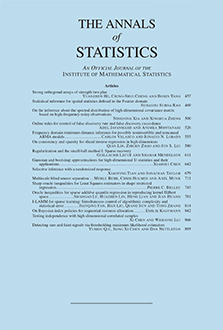Abstract
The classical theory of rank-based inference is entirely based either on ordinary ranks, which do not allow for considering location (intercept) parameters, or on signed ranks, which require an assumption of symmetry. If the median, in the absence of a symmetry assumption, is considered as a location parameter, the maximal invariance property of ordinary ranks is lost to the ranks and the signs. This new maximal invariant thus suggests a new class of statistics, based on ordinary ranks and signs. An asymptotic representation theory à la Hájek is developed here for such statistics, both in the nonserial and in the serial case. The corresponding asymptotic normality results clearly show how the signs add a separate contribution to the asymptotic variance, hence, potentially, to asymptotic efficiency. As shown by Hallin and Werker [Bernoulli 9 (2003) 137–165], conditioning in an appropriate way on the maximal invariant potentially even leads to semiparametrically efficient inference. Applications to semiparametric inference in regression and time series models with median restrictions are treated in detail in an upcoming companion paper.
Citation
Marc Hallin. Catherine Vermandele. Bas Werker. "Serial and nonserial sign-and-rank statistics: Asymptotic representation and asymptotic normality." Ann. Statist. 34 (1) 254 - 289, February 2006. https://doi.org/10.1214/009053605000000769
Information





